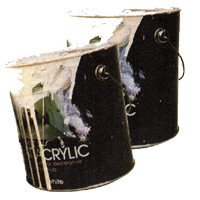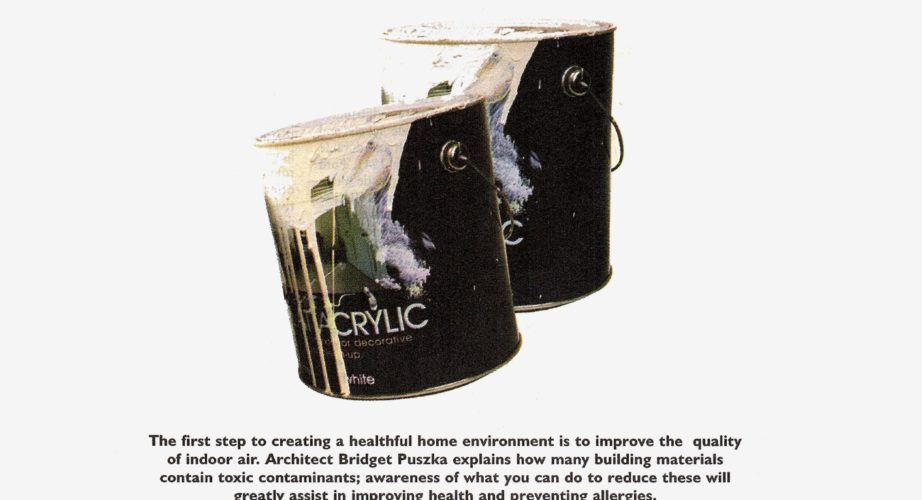Do you need to know if Indoor Air Quality will make you sick?
Three pollutants in indoor air that will make you sick.
By Bridget Puszka, BP Architects
Home Pollutant Health Check
Learn about indoor air quality and home pollutants. Bridget Puszka from BP Architects explains the issues with indoor air quality in the article ‘Home Pollutant Health Check’.
Below are some answers to questions about indoor air and household pollutants.
What are some household pollutants?
So you have heard of environmental pollution. And even pollution in the bay or sea. Pollutants can also affect the quality of your indoor air. And in some cases, you may suffer health effects from these pollutants. Some of the contaminants are human carcinogens. Such as radon and formaldehyde. And asbestos will cause mesothelioma or asbestosis.
Lead is a toxic metal. This metal can be in drinking water, food and air, such as lead-based paint is a familiar source of lead dust.
Some of the pollutants are from the outdoor air. But most of them are from either the building or what you bring into the building. Say, for example, you may have a chipboard or MDF board in your home. Both can outgas formaldehyde unless you use chipboard or MDF with no formaldehyde in it. You could find that you have high levels of formaldehyde inside your home. CSIRO has completed studies on the indoor air quality of homes recently completed. They have found that the indoor air is more polluted than the outside air in these homes. This study by CSIRO applies to new homes and home renovations.
Air Pollutants fall into three categories. There are biological. And there are chemicals such as emissions from materials called volatile organic compounds (VOCs). And there are also particulates. The following are three groups of indoor air pollutants that will make you sick.
1. Chemical emissions in indoor air
- Pesticides
- Radon – radioactive colourless, odourless, tasteless gas
- Carbon monoxide and carbon dioxide
- Building Materials that outgas chemicals such as formaldehyde
- Building Materials made from asbestos or lead
- Nitrogen dioxide and nitric oxide
2. Particulates in indoor air
- Dust
- Tobacco smoke
- Vehicle pollution
- Lead
3. Biological pollutants in indoor air
- Mould and pollen
- Dust Mites
- Viruses, bacteria
- Cockroaches
- Rodents
What are the common indoor air pollutants?
These are 7 commonly found indoor air pollutants.
- Carbon monoxide (CO)
- Radon
- Nitrogen dioxide (NO2)
- Secondhand cigarette smoke
- Lead particles
- Asbestos
- Mould
Can Mold make you sick?
The short answer to this is yes; mold can make you sick especially if you have allergies or asthma. And you don’t have to be allergic to molds for it to make you sick. Exposure to mold can irritate your eyes, skin, nose, throat, and lungs.
There are lots of different moulds. We all will react to mould and mould spores. Mould is a fungus, and it thrives in moist, damp and dark conditions. If you have mould, you will have spores released into your indoor air. And it is the mould spores that you can inhale that will cause you to have a physical reaction.
Mould can form in the least expect areas of your home. You may have moisture inside your external walls. So mould could be developing in a place you can’t even see. There might be mould on your fence outside your bedroom window. Anywhere you might have a damp place, moulds can grow and spread. If you have dampness underneath your home, there will be mould.
How can you check air quality in your home?
You can have the particles and chemicals in your air tested. You can do tests to measure the type and amount of particles or particulate in your indoor air. And they can also check for volatile organic compounds like chemical pollutants as you can for mould spores.
You can install a carbon monoxide detector. And you can check for signs of mould. You can purchase an air quality monitor. And with the air quality monitor, you can check for particles and chemicals in your indoor air. Or you can organize a professional air quality test of your home.
Sometimes mould forms on the inside of your exterior walls. So you only find out when you demolish the wall that there was mould inside. Home radon test kits are available to test radon in your home.
Is air quality better indoors?
Not always. As mentioned above, CSIRO studies conclude that newly completed homes and renovation can have high levels of pollutants inside the house. Higher than the pollution from vehicles outside a house.
How can I improve indoor air quality?
Does your home have poor indoor air quality? Is your home making you sick? Are you suffering from sick building syndrome? Do you have persistent allergies that get better when you are away from your home? Well, you can do a Home Pollutant Health Check on your home. Learn how in this article by Bridget Puszka, BP Architects ‘Home Pollutant Health Check’. Find out what is polluting your indoor air quality. And how you can improve your Indoor Air Quality.
If you want you home to be a healthy home contact Bridget at BP Architects to find out how we can help, learn about how we help our Clients get their architect house design.



